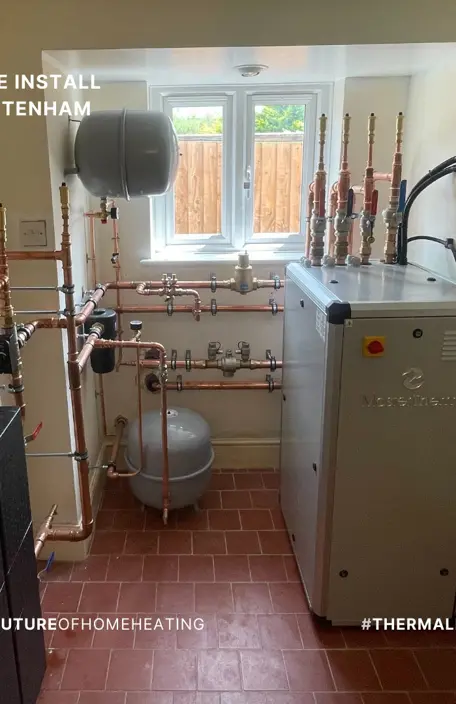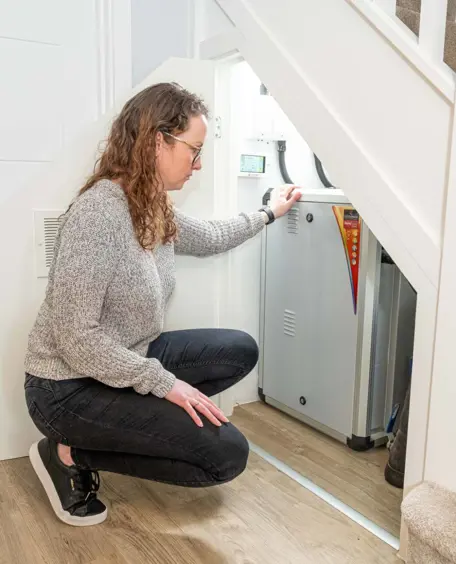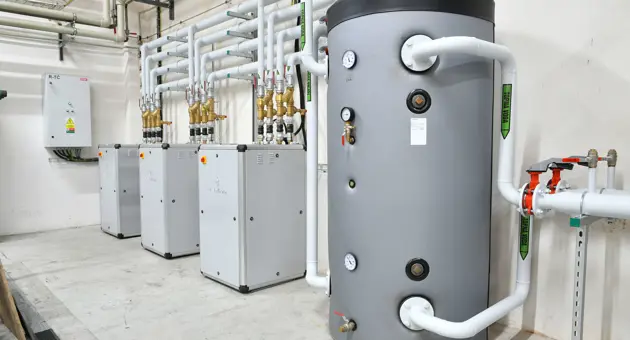Cooling the interiors of homes and apartments is a topic that has become increasingly relevant in recent years as the summer heat increases. How exactly does heat-pump cooling work? Is it efficient enough to replace conventional air conditioning? And what about operating costs? This article will look into just that.

Cooling the interiors of homes and apartments is a topic that has become increasingly relevant in recent years as the summer heat increases. How exactly does heat-pump cooling work? Is it efficient enough to replace conventional air conditioning? And what about operating costs? This article will look into just that.
First, let us be clear about what kind of heat pumps we are talking about: it is the air-to-water and ground-to-water heat pumps, which are the most common in the Czech Republic, where they usually serve as the main source of heat for heating. But as you are about to learn, they can also provide cooling.
Where does all the interior heat come from?
It is important to be cognisant of the physics behind overheating indoors. People often assume that just as in winter a home is cool because of the low outside temperature, in summer it is hot inside because of the high temperature of the air outside. But this is not the case: while in winter the difference between the average outdoor and indoor temperature is normally 20 degrees or more, in summer the long-term outdoor temperature in July and August is around 18°C and only in very rare cases does the average daily air temperature exceed 23-24°C. This means that even in warm periods there are no significant differences between the outside temperature and the interior temperature (short-term extremes are additionally covered by the thermal capacity of the house and its insulation). All overheating of the interior of the building is due to solar radiation, in particular to the solar heat seeping in through the windows and roof of the building. It is due to prolonged sunny weather that indoor temperatures can exceed 30°C. By preventing solar heat from seeping in through windows, the temperature load of the space can be significantly reduced and the costs of any cooling can be very substantially reduced. It is always better not to let heat into the interior (by means of external blinds, shutters, awnings, etc.) than to cool the house expensively.
Reversible heat pump cooling
As far as heat-pump cooling is concerned, what one generally refers to is reversible (or active) cooling, where the operation of the heat pump is reversed, the interior of the building is cooled and the heat from the cooling is transferred to the surrounding environment.
The most widely used heat pumps in the Czech Republic are air-to-water systems. This is the only type of heat pump that is always equipped with a reverse valve due to the evaporator defrosting during winter operation (each evaporator defrosting cycle is essentially a short reversing cooling mode). As a result, air-to-water pumps usually allow reversing cooling — either as standard equipment or as an option at extra cost.
For ground-to-water or water-to-water heat pumps, the reverse valve is normally absent from the cooling circuit, as it is not needed for the heating function. Therefore, should active cooling be required, special equipment or a special heat pump must be ordered. Another option for ground-water systems is to replace the reverse valve on the cooling circuit with a reverse valve on the liquid line outside the heat pump. With a simple three-way valve system, the primary circuit is redirected to the house cooling system and the secondary (warm) side of the heat pump is directed to the borehole or surface collector by reversing the valve. This achieves the same effect as refrigerant reversal. Reversing the liquid line is also suitable for large ground-to-water heat pumps with a high heating capacity, where installing a reverse valve on the cooling circuit would be problematic.

In general, as long as a heat pump has sufficient capacity to heat a given building in winter, it also has sufficient capacity to cool it in hot weather.
What about the energy efficiency of cooling
A modern air-to-water inverter heat pump is a very technically advanced cooling unit and typically offers equal or greater cooling efficiency than the most sophisticated air conditioners. Nevertheless, other methods of cooling a building with a heat pump are still significantly more energy-efficient (and therefore cheaper to operate). These are active ground-water or water-to-water cooling pumps, where waste heat is effectively rejected into the cool ground or groundwater. The table below provides an overview of the energy efficiency of reversible heat pump cooling and a comparison with advanced air conditioning.
Cooling method (cooling water temperature gradient)
condensing (14/10°C) non-condensing (22/20°C)
| heat pump type | COP cooling | COP cooling |
| air-to-water (inverter) | 3÷5 | 4÷7 |
| ground-water (inverter) horizontal collector | 4,5÷5,5 | 5,5÷7 |
| ground-water (inverter) vertical collector | 5÷6 | 6÷7.5 |
| water-to-water (inverter) groundwater | 5÷6 | 6÷7,5 |
| air conditioning A+++(inverter) | 3,5÷4,5 | --- |
With ground-water or water-to-water heat pumps, the waste heat from cooling does not need to be ejected into the surroundings, but can be used energetically, e.g. for domestic hot-water or pool heating.




